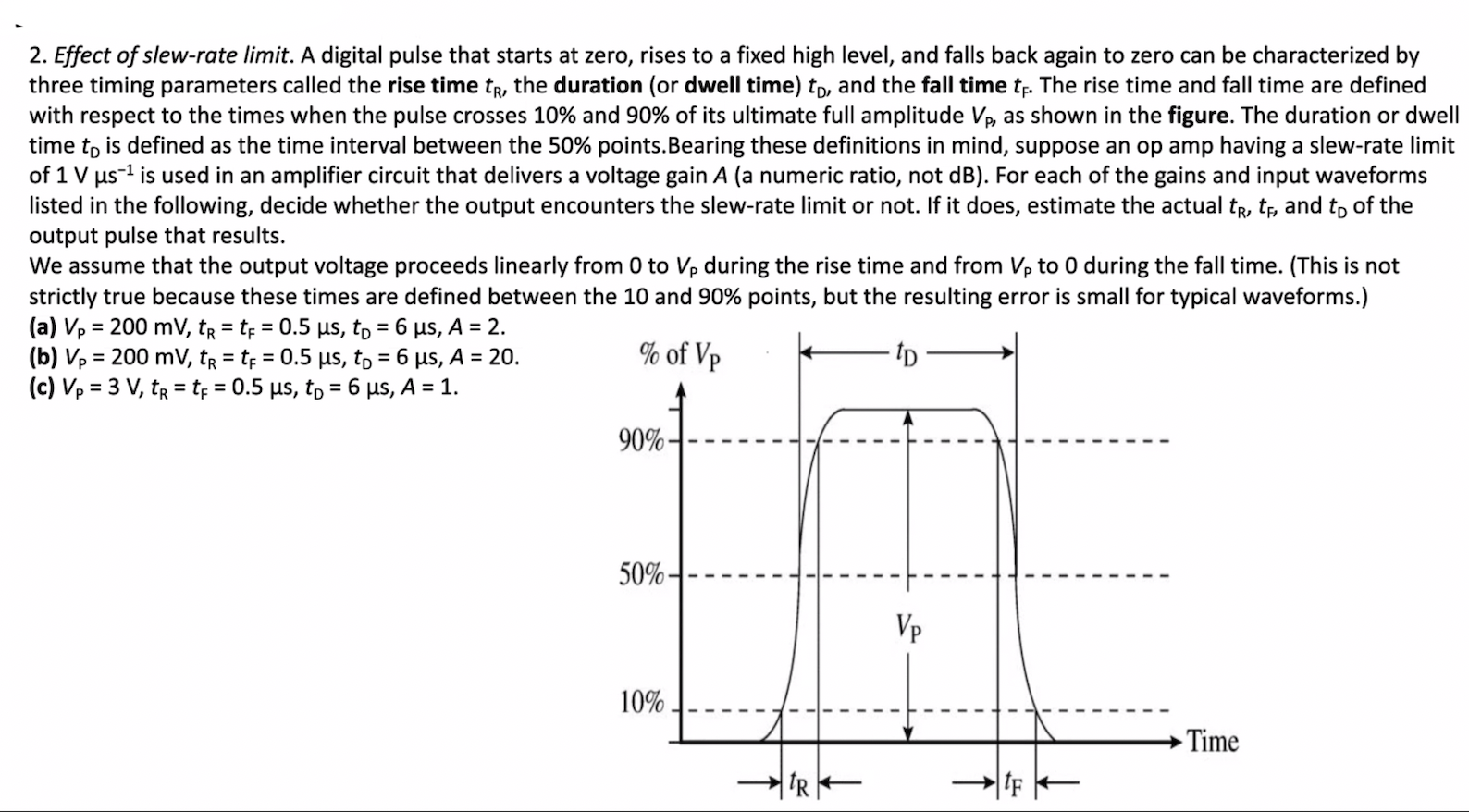Home /
Expert Answers /
Electrical Engineering /
please-find-the-slew-rate-i-will-upvote-2-effect-of-slew-rate-limit-a-digital-pulse-that-start-pa288
(Solved): Please find the slew rate. I will upvote! 2. Effect of slew-rate limit. A digital pulse that start ...
Please find the slew rate. I will upvote!
2. Effect of slew-rate limit. A digital pulse that starts at zero, rises to a fixed high level, and falls back again to zero can be characterized by three timing parameters called the rise time tR, the duration (or dwell time) to, and the fall time tp. The rise time and fall time are defined with respect to the times when the pulse crosses 10% and 90% of its ultimate full amplitude Vp, as shown in the figure. The duration or dwell time to is defined as the time interval between the 50% points. Bearing these definitions in mind, suppose an op amp having a slew-rate limit of 1 V µs-¹ is used in an amplifier circuit that delivers a voltage gain A (a numeric ratio, not dB). For each of the gains and input waveforms listed in the following, decide whether the output encounters the slew-rate limit or not. If it does, estimate the actual tR, TF, and to of the output pulse that results. We assume that the output voltage proceeds linearly from 0 to Vp during the rise time and from Vp to 0 during the fall time. (This is not strictly true because these times are defined between the 10 and 90% points, but the resulting error is small for typical waveforms.) (a) Vp = 200 mV, t? = tf = 0.5 ?s, t? = 6 ?s, A = 2. (b) Vp = 200 mV, t? = tf = 0.5 µs, t = 6 µs, A = 20. % of Vp tD (c) Vp = 3 V, tR = tf = 0.5 µs, t? = 6 ?s, A = 1. Time 90%- 50% 10% TR Vp
